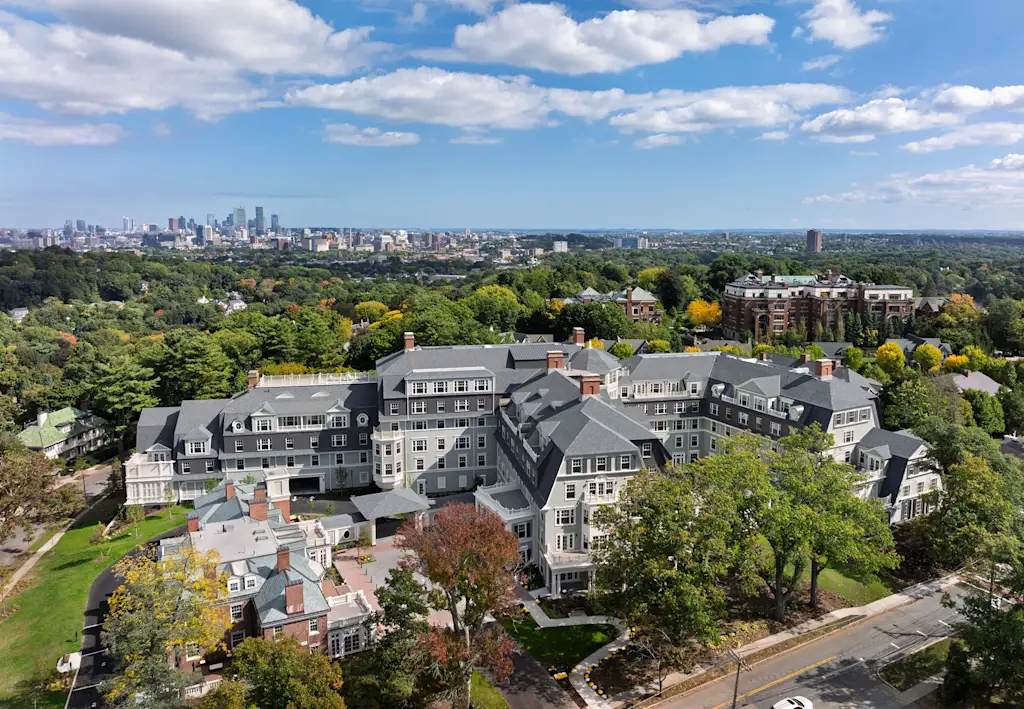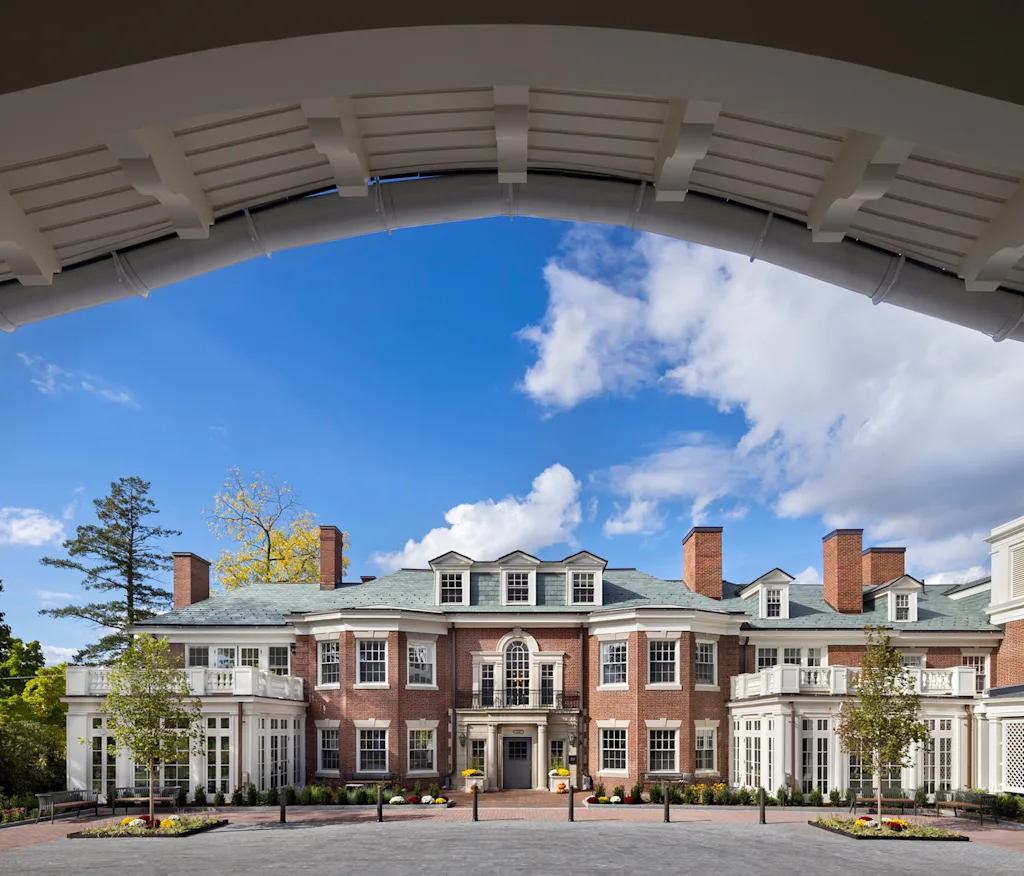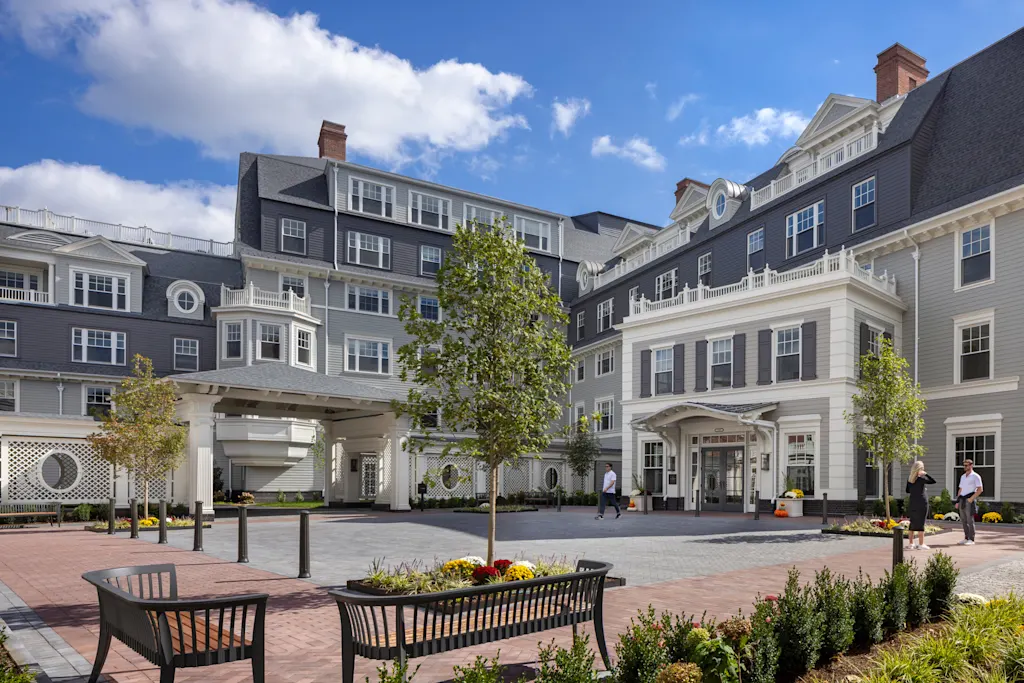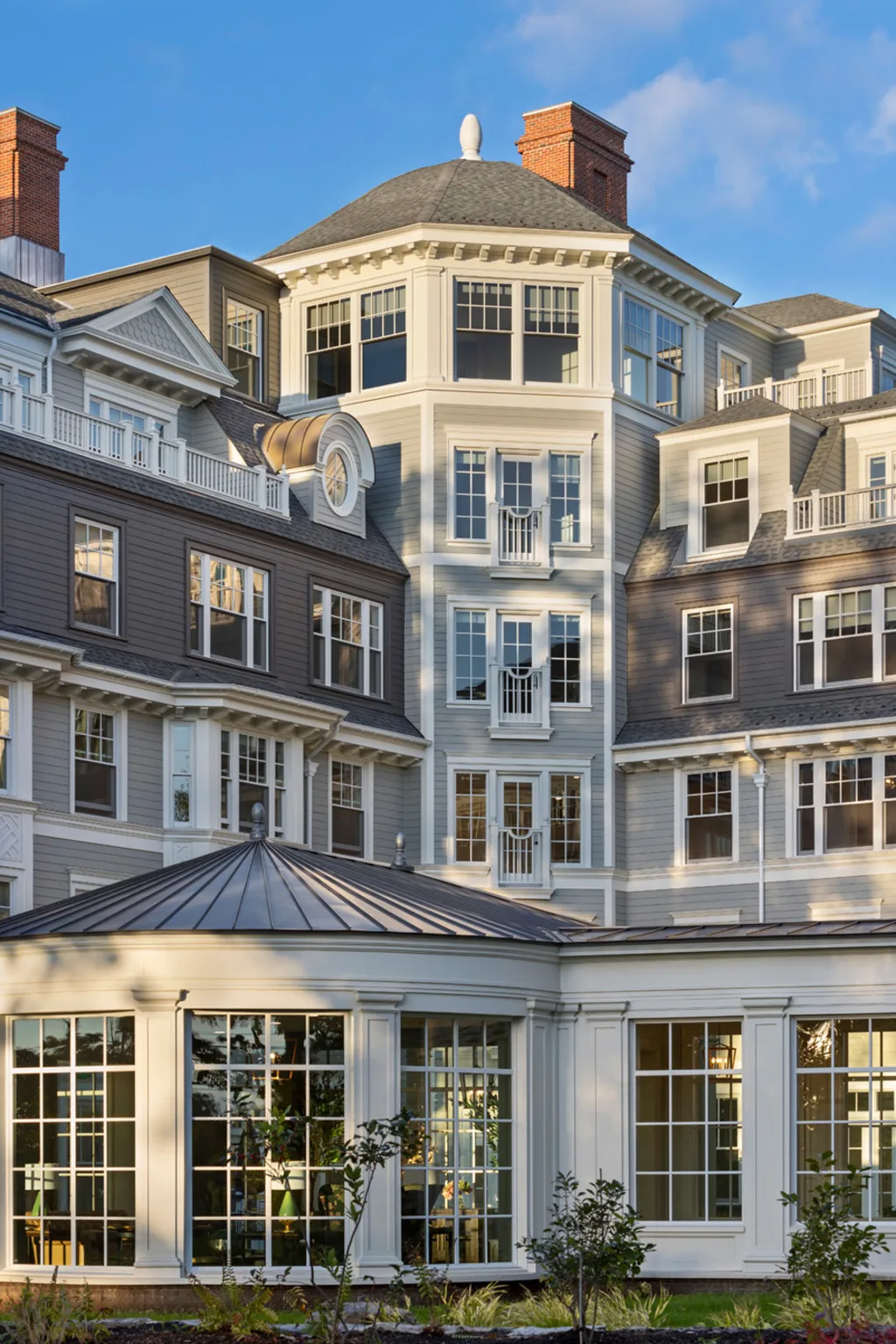
College across the country may soon start seeing a much older demographic roaming their campuses.
According to a report from the higher education publication Best Colleges, at least 84 public or nonprofit colleges have announced they would merge or close over the past five years. Almost half of those are outright closures, as small colleges struggle to keep up with rising costs amid falling enrollment. In many instances, the shuttering of a college means the mothballing of its campus.
But while some campuses are being left idle with no future plans, a growing number are finding new life in the form of senior living facilities. That doesn’t mean just moving seniors into old dorm buildings. Some adaptation projects are showing that college campuses have room and opportunity for building reuse and building redesign to accommodate the special needs of senior residents.

“College sites are absolutely prime because they have a slightly larger scale, they have infrastructure running to them, and they have open space that can be utilized,” says Sargent C. Gardiner, partner at Robert A.M. Stern Architects, who has worked on multiple college campus adaptation projects.
One of the firm’s most recent projects is the Newbury of Brookline, a luxury senior living community in Massachusetts built from and around the former buildings of Newbury College, which shuttered in 2019. Located just outside Boston, the campus centered around a historic mansion and had been used by the college since the early 1980s.

Now, that historic mansion has been joined by a newly constructed six-story building that holds 159 units of independent, assisted, and memory care living facilities for seniors. Amenities include an indoor saltwater pool, a fitness center, art rooms, and a rooftop bar. Operated by Kisco Senior Living, the Newbury of Brookline has monthly rents that start at $10,000.
This project is part of a trend in higher education, particularly at smaller colleges, which are turning to real estate development as a way of buttressing their bottom line, or, in the case of closed colleges, finding entirely new lives. In dozens of projects across the country, colleges are turning over parts of their campuses for redevelopment as housing, and often senior housing.

Old buildings, new use
On the campus of the State University of New York’s Purchase College, a new senior living facility recently opened that includes 174 independent living apartments, 46 villas, 36 assisted-living residences, and 32 memory care suites. In Denver, the closed Johnson & Wales University is now home to 154 units of affordable housing. More are likely on the way. Wells College in Aurora, New York, closed in June and one of the proposals for the property includes housing. Meanwhile, senior housing is also on the table for the campus of the College of Saint Rose, in Albany, New York, which closed in 2024.
On the campus of the former Newbury College, Gardiner says the project was carefully designed to fit into the campus and mesh with the existing facilities. It was also important to blend the architecture with the surrounding community, which has many historic buildings and classical building styles. “There are a lot of people embedded in the neighborhood that really care about the neighborhood, and really care about the architectural character. They don’t want to see it ruined,” Gardiner says. “It was very clear from the very beginning that they needed somebody that could talk the talk of regional architectural languages.”

Robert A.M. Stern Architects, one of the foremost classical architecture firms in the U.S., has deep experience designing new buildings that fit their context. But while the central building of the former college campus is a historic mansion, the site itself has been a college for decades. That gave the architects the leeway to design a building with the look and feel of the historic structures in the area, but at a more institutional scale.
Uniquely, the building is much taller than its neighbors. “The central portion of it rises to six stories, which is unheard of in many senior living areas, especially in a suburban neighborhood,” says Gardiner. “But going up was the key to this project.”
It was able to accommodate a significant amount of units while preserving open space and a stand of old growth trees. “That allowed the project to just nestle in and sort of feel like it was always here,” Gardiner says.

The height also opened up another unique amenity for the project, creating room for a rooftop deck attached to the building’s bar, where residents can go for an evening drink and take in views of downtown Boston in the distance.
All of this—along with its tony location—is why there’s such a relatively high price point for residences at the Newbury of Brookline. It’s part of the appeal and the business logic of turning a former college into this new sort of campus.
But the concept won’t work just anywhere, Gardiner says. A big campus far removed from urban amenities or, importantly, good healthcare, may not pencil out as well as a campus that’s better connected or even in a city center. “The green acre sites may get gobbled up by some other use,” he says. “It’s these in-between, irregular sites where you can sort of squeeze the caulking in.”
As more colleges in these areas struggle to survive, this kind of rebirth may be just what their campuses, and older adults, need.
